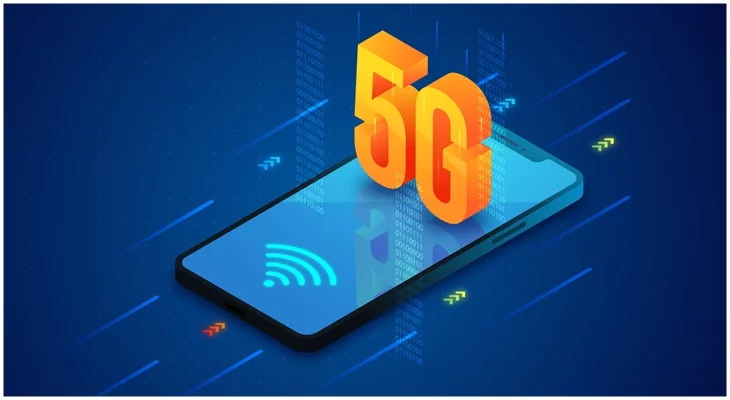5G In Industrial Manufacturing: Introduction
5G in Industrial Manufacturing will be critical to enhancing and enabling manufacturing advancements. For manufacturers, competitiveness is everything. New process innovations help to achieve much-needed gains in efficiency and profitability.
Manufacturers and telecom operators can also use 5G networks to build smart factories. These factories can use technologies like automation, artificial intelligence. They can also use augmented reality for troubleshooting and the Internet of Things (IoT).
Operators can generate new revenue streams with 5G. Manufacturing, along with energy and utilities, is one of the most important sectors for operators addressing industry digitalization with 5G technologies in terms of new revenue potential.
Manufacturing With 5G
The network characteristics required for manufacturing are provided by 5G technologies. To support critical applications, low latency and high reliability are a must. Ubiquitous connectivity is ensured by high bandwidth and connection density. Manufacturers currently rely on fixed-line networks to meet these requirements.
For factory floor production layout changes and alterations, mobile 5G technology will provide greater flexibility, lower costs, and shorter lead times.
Impact Of 5G in Industrial Manufacturing
Data Collection Improvements
Manufacturing companies are turning to organizational data. This also gives them the ability to gain valuable insights and improve operational intelligence. Data analytics is not a new concept in the manufacturing industry.
Big data analytics also improves manufacturing processes. It uses advanced analytics to ensure quality assurance with tests for predictive analysis. Big data analytics provides a significant return on investment for organizations.
Automation Boost
Manufacturers can design robots that benefit from increased data integration and real-time decision-making. This would be all thanks to 5G's ultra-computing capabilities. For example, the automotive industry has already begun to use collaborative robots. They use them to complete tasks such as reaching into tight spaces. The robots also help to work in hazardous conditions or positions that are not suitable for humans.
Augmented Reality For Troubleshooting
Advanced technological solutions find a place in manufacturing units. They help to solve a variety of problems in manufacturing units and modern factories. Augmented reality is one such solution.
Technicians can use augmented reality solutions to identify problems and resolve them. Information is also easy to share in a hands-free environment using virtual reality tools. This allows sharing of important data between different production sites, and it also saves time.
Unification Of The Supply Chain
The fourth industrial revolution focuses on digitalizing modern manufacturing units. It also focuses on increasing automation and the introduction of smart devices. In manufacturing, 5G allows supply chains to evolve from a collection of independently managed locations to a more connected network of devices. It also helps them to share information in real-time.
Machine Control Via The Cloud
Factory automation has relied on programmable logic controllers (PLCs) for decades. PLCs were physically installed on the machines they controlled. They were then hard-wired into computer networks. This would also ensure precise, reliable control under extreme conditions.
If 5G delivers on its promises, the PLC could be virtualized in the cloud. Thus allowing wireless control of machines in real-time at a fraction of the cost.
Augmented Reality
5G augmented reality promises high-quality instructions on the shop floor. It also provides stutter-free augmented reality. It can walk people through each individual motion they need to make, step by step. This will enable shop-floor workers to complete advanced tasks without the need for specialist engineers. This can also reduce costly machine downtime.
On The Factory Floor, Perceptive AI Eyes
5G will enable real-time data streaming to the cloud as well as real-time video analytics. A security camera could detect a disturbance. It can determine whether there is a threat or danger and dispatch a drone or alert a worker to investigate. Also, the same security camera can measure cycle times and track process deviations.
Rapid Decision-Making
5G reduces the time it takes to make a decision. It allows massive amounts of data ingestion, processing, and actions in real-time. When machines aren't running, and prices are good, manufacturers in several heavy industries have been able to sell excess energy back to the grid.
Use Cases of 5G in Industrial Manufacturing
Automation Of Processes
Smart factories are highly digitalized and connected environments. In it, robots, machines, and devices can self-heal and run operations autonomously. This is all thanks to Industry 4.0 and the Internet of Things. Smart factories can also automate repetitive, labor-intensive, and dangerous tasks. This is one of its main advantages. This also reduces human error and the risk of accidents. It also allows people to take on more complex roles.
Remote Monitoring Of Production Assets
The ability to remotely track and control production assets is another advantage of smart factories. Instead of being on the factory floor, operators can use software systems to keep track of operations in real-time. This allows operators to locate and manage assets. Thus they also gain real-time actionable insights. Also, they can configure machinery for the greatest safety, efficiency, and quality.
Collaborative Robotics
For industrial tasks, manufacturers use a variety of robots. There are robots that can move products from one location to another. Also, robots are designed to work in the warehouse alongside humans. The data required to power a warehouse of robots lacks the support of current wireless speeds. So, a majority of these industrial robots connect via a wired system.
Without the limitations of cables, 5G will make robot use in manufacturing faster and more efficient. Manufacturing robots will grow in the coming years.
Predicting Breakdowns And Downtimes Using Analytics
Unplanned downtime is one of the most significant impediments. This also prevents the manufacturers from achieving maximum productivity. Manufacturers can predict and prevent unwelcome downtimes using connected systems and predictive analytics.
Predictive analytics necessitates process automation and remote monitoring. 5G networks will also increase the accuracy of predictions. 5G will also ensure the reliability of data gathered from pilot tests.
Additive Manufacturing
The manufacturing industry is being affected by additive manufacturing. Additive manufacturing is also known as 3D printing. Spare part management, in particular, is being revolutionized by 3D printing. Many warehouses keep a large supply of spare parts on hand for customers who use older machines.
One-time requests for spare parts account for half of all orders shipped. They can forecast demand for spare parts using predictive analytics. They can thus create the part on-demand using a 3D printer. This will cut down on waste as well as the cost of storing spare parts.
The Development Of New Business Models
In the manufacturing sector, the introduction of 5G opens up new business models. The ability to control multiple devices over a mobile network allows operators to be as creative as they want. Drones are finding applications in smart factories for a variety of tasks. Their role ranges from material transportation across the factory floor to aerial site audits.
Advantages Of 5G in Industrial Manufacturing
5G Is The Gold Standard In Communications
For the first time, critical communications can be carried out in real-time over 5G networks. This means that 5G can install applications that need absolute reliability and security. This is also true for both a remote-controlled crane and a manufacturing facility.
5G opens up new fields of application in an industry where other wireless technologies, such as Wi-Fi, have before fallen short.
5G Is Gaining Traction As A Competitive Advantage
The number of connected devices on the IoT has surpassed the number of actual human Internet. The new communication standard is a critical component of automated and connected driving. It is also a need for the smart factory of the future. As a result of the increased connectivity, 5G is becoming a competitive factor.
Production Is More Secure, Improved, And Flexible
5G will allow for the implementation of completely new manufacturing concepts. This goes hand in hand with the associates' continued education. 5G communications have the potential to improve and streamline the work of production and logistics associates.
Conclusion
The new 5G communication standard allows for reliable, secure, and high-speed data transmission with quick response times. Thus allowing manufacturing to become more flexible, mobile, and productive. As a result, 5G is an absolute need for the factory of the future.
The manufacturing industry, without a doubt, stands to benefit the most from 5G. Projects are springing up at a rapid pace because businesses in this space are more engaged and optimistic about the potential benefits of 5G.
You may like to read:
What is The Distributed Cloud: Advantages and Disadvantages
Edge and Cloud Computing for IoT and Their Key Roles





